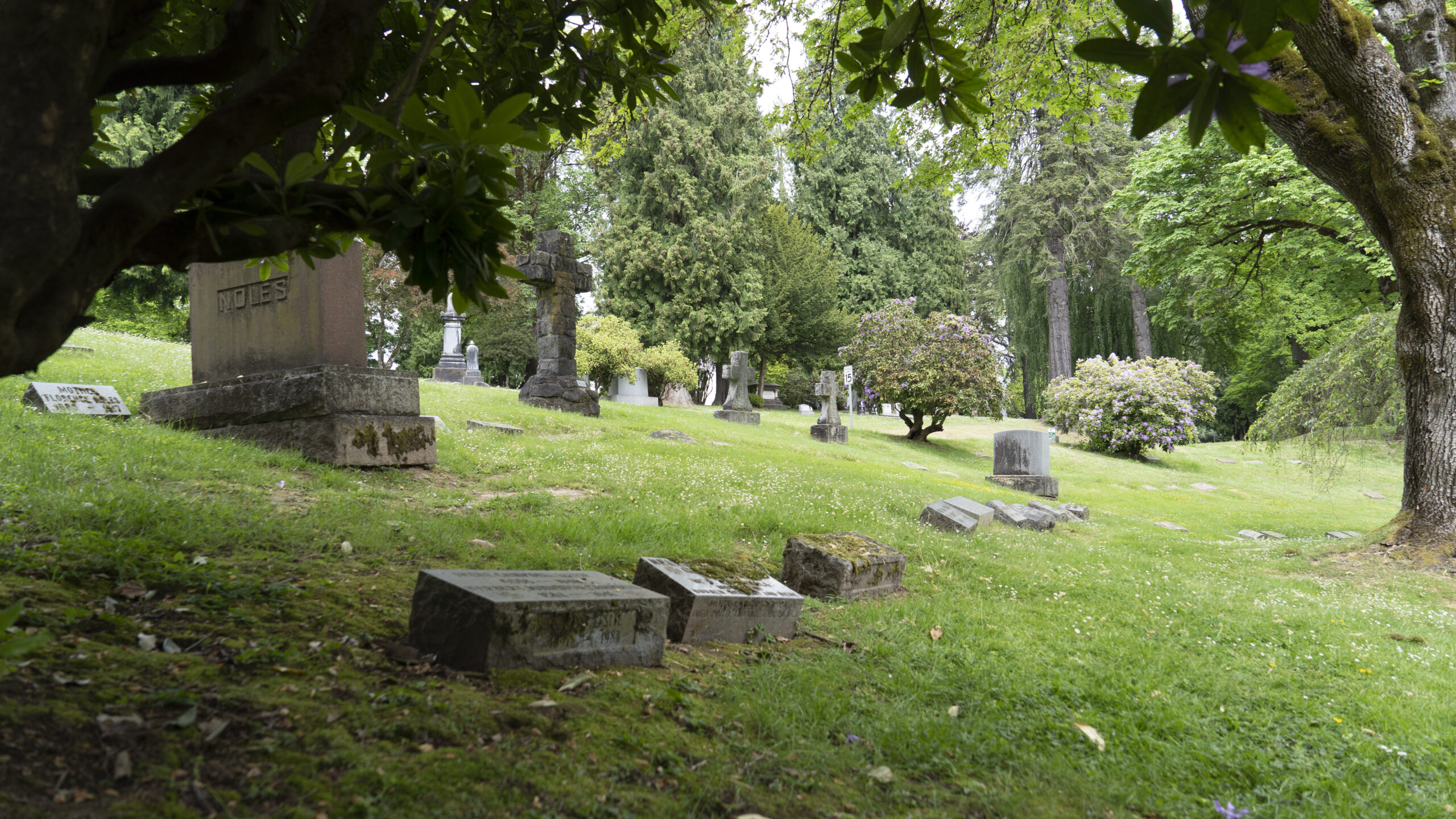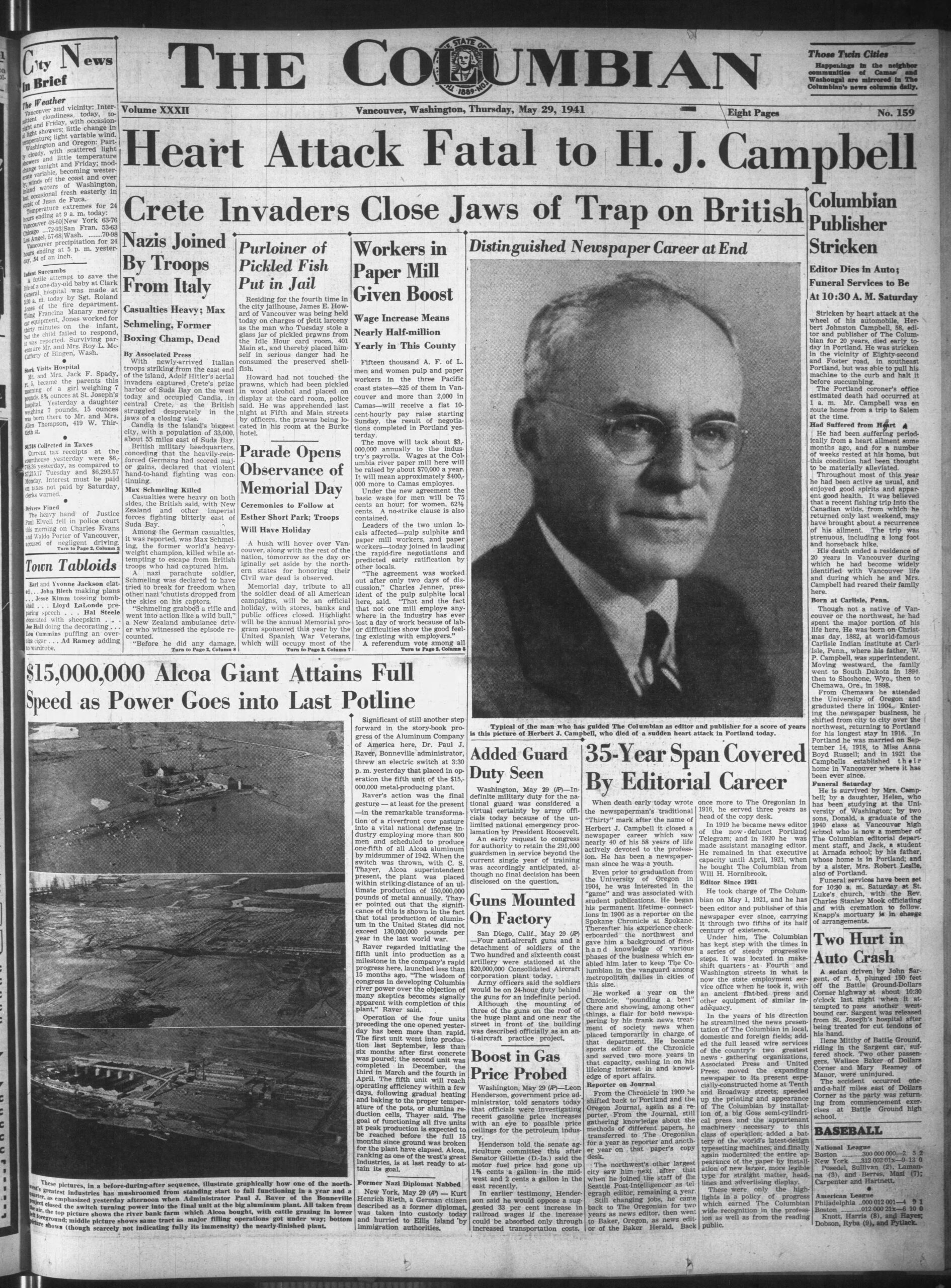The machine was tucked in a dusty black box, clasped with metal and a handle of leather.
From a nook of The Columbian’s building, I took my great-grandfather’s heirloom and walked into my brother Ben’s office. I set the box down, slid the 1920s-era 16mm film projector and began to set it up.
As I opened the metal canisters that held the accompanying film reels, I wondered what was on this footage from our great-grandfather and former owner of The Columbian, Herbert Campbell, that I hadn’t yet seen. I knew it was taken mostly by Herbert, but was there some clue or insight or image of him that I could learn from?
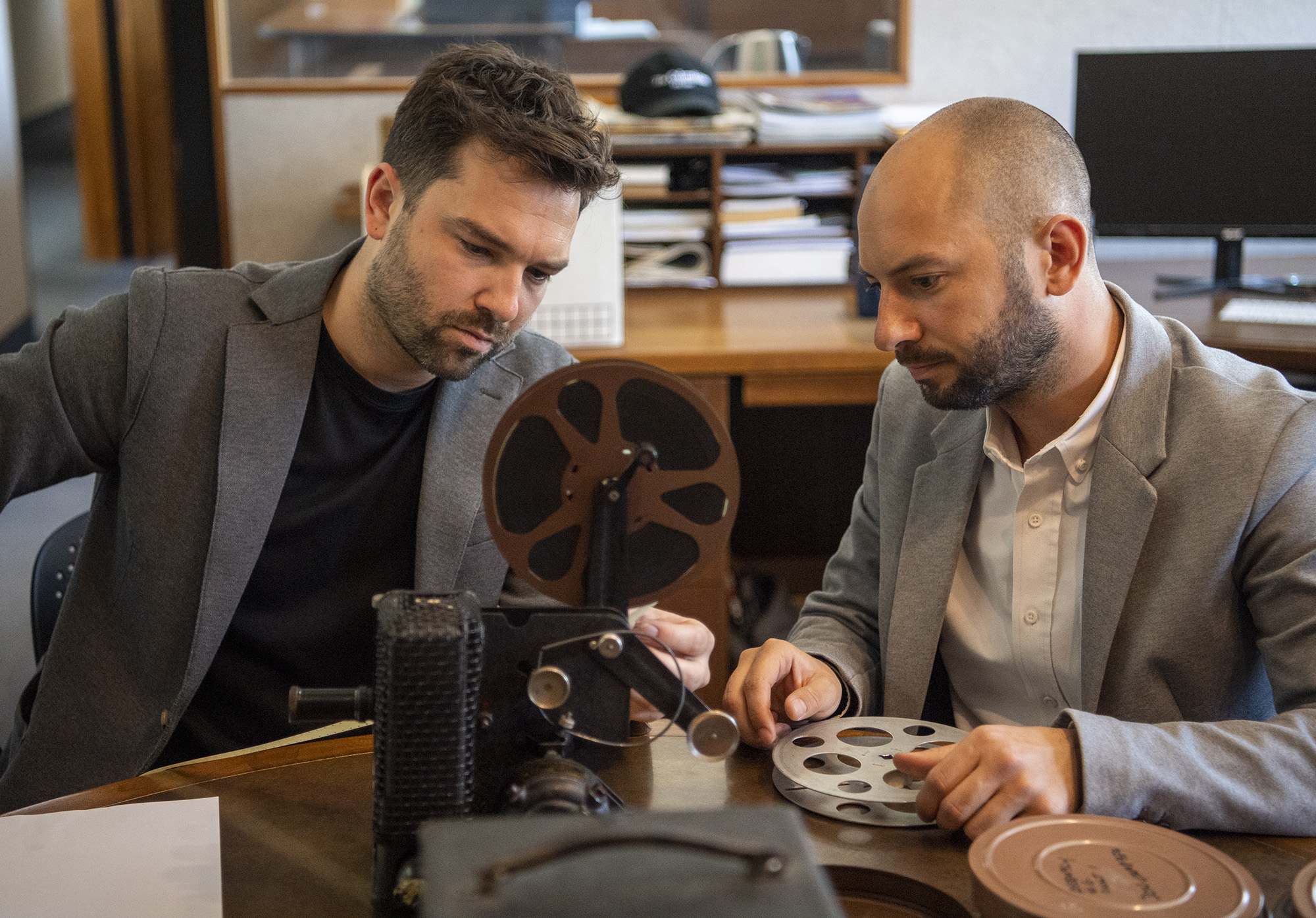
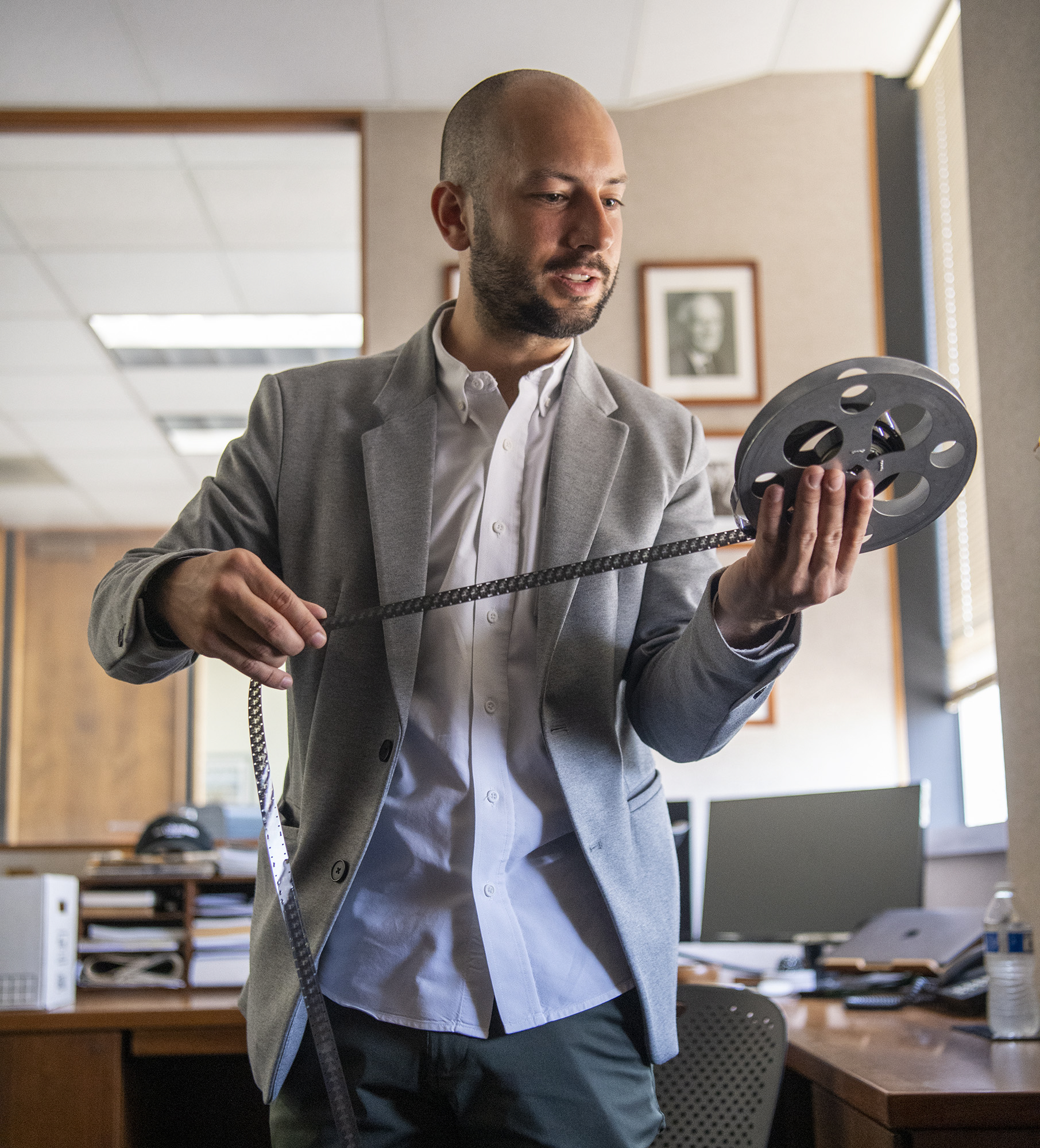

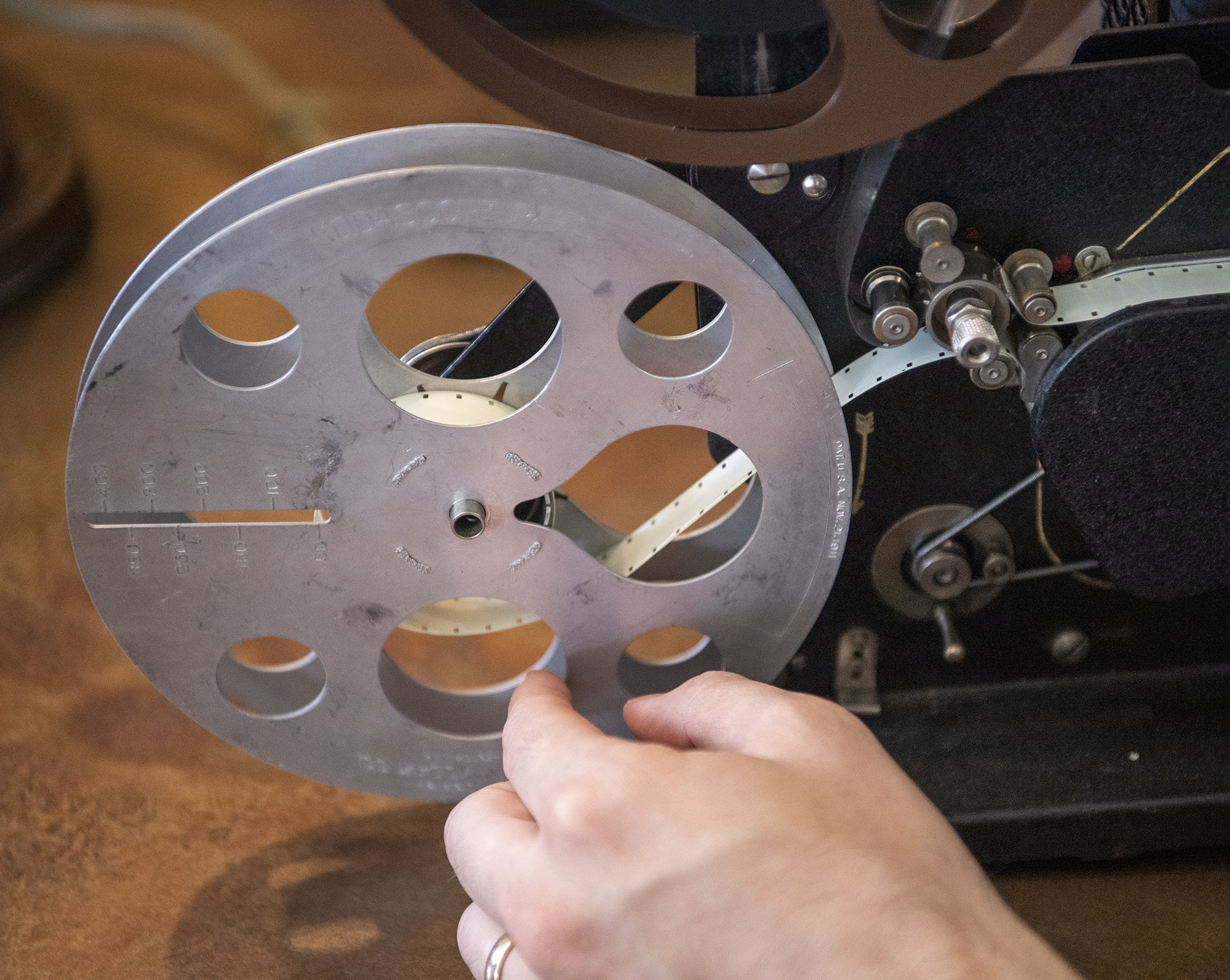
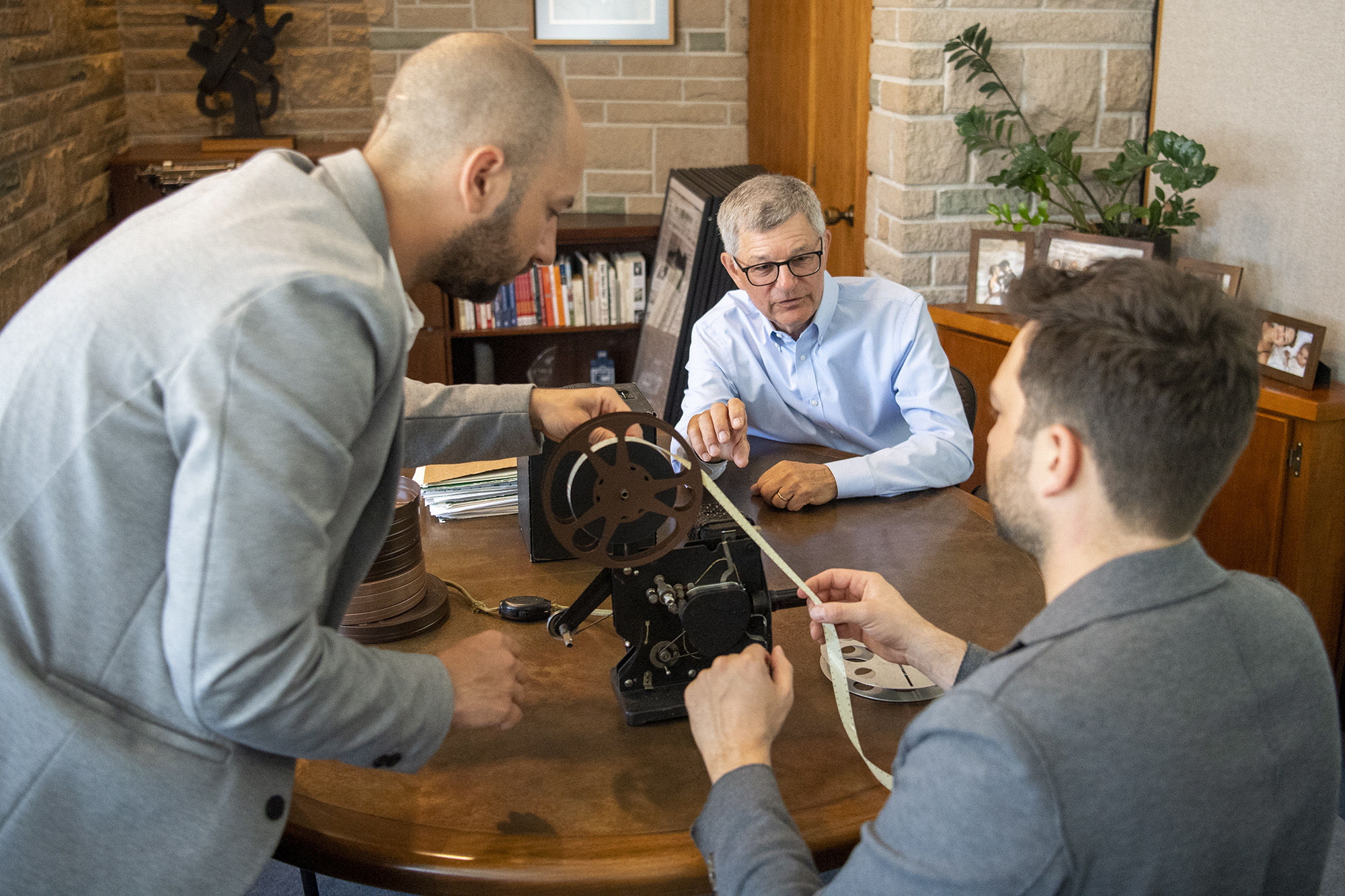
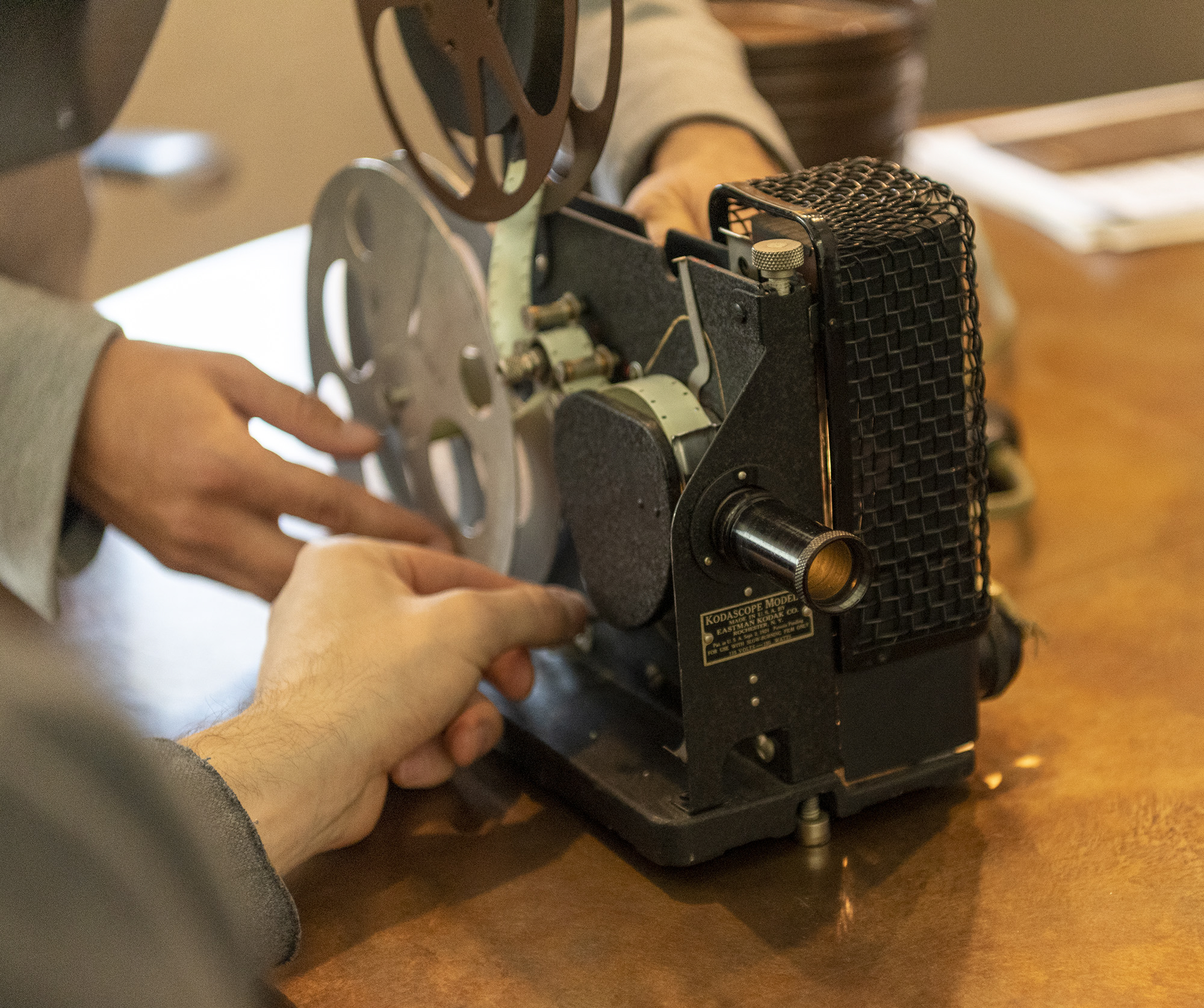
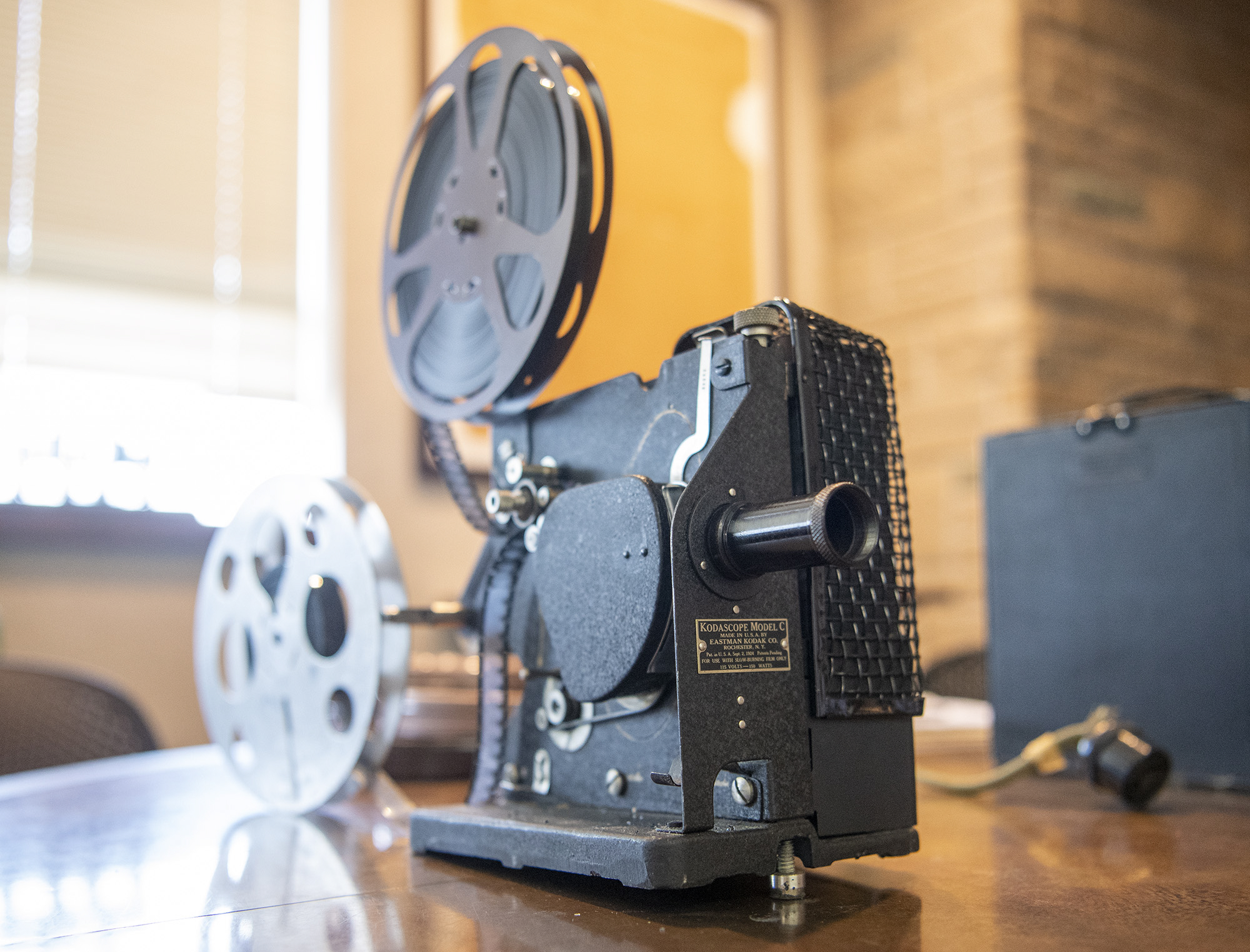
For the past six months, I’d been reviewing and patching together Herbert Campbell’s life story and details from every source I could find, including our newly released digital archives, which allowed me to search and target information from every Columbian article ever written. I drew upon unpublished accounts from former Columbian employees and my grandfather and old company documents.
After unfolding the projector’s metal arms, retracing the coil belt, screwing on the lens, attaching the film reel and threading it through the spools, I flipped the switch on the green frayed cable to turn it on.
The light bulb began to shine and the motor squeak but barely turn. It seemed to be working.
My great-grandfather’s life from the time he bought The Columbian in 1921 to his death in 1941 was shifting and wavering in success and failure, innovations and the Great Depression, a new building and nearly losing grasp of the paper and his family finances. At one point, he even had to drop the Saturday edition to keep the paper alive.
Enlarge
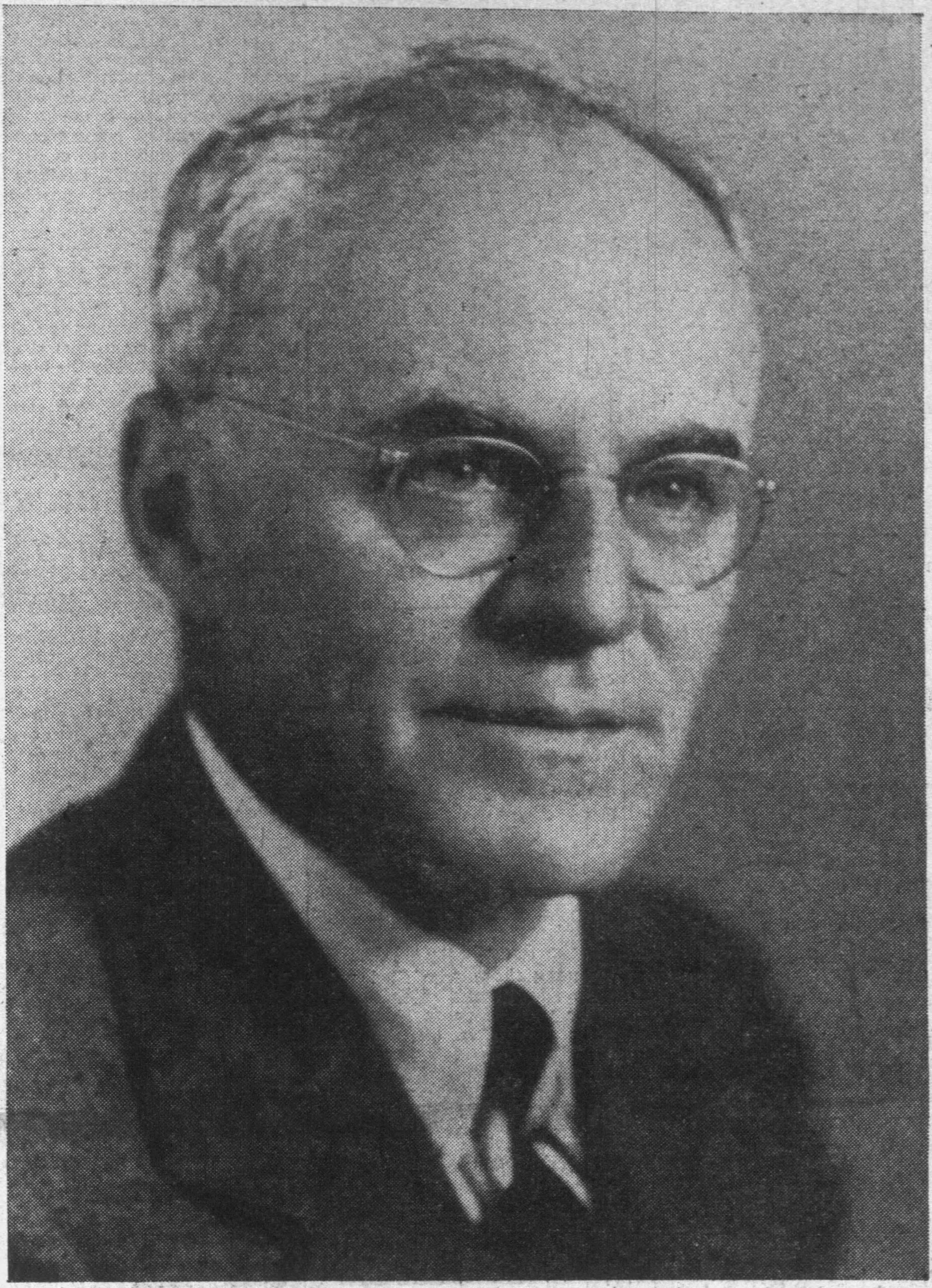
The Columbian archives
While uncovering new details about his life, I also retraced his steps in Vancouver and the surrounding area to see the places he’d left a mark and made history. I visited the old Columbian headquarters building. I went to visit Pearson Field to see one of the many places where Herbert impacted Vancouver. I went to Herbert’s old house and finally visited his grave in Portland for the first time.
The motor in the projector wasn’t turning the reels, but we could see an image projected on the screen. And then the motor started smoking. Small sparks shot from inside the motor, and it was time to stop the experiment. Herbert Campbell’s projector wasn’t working, but no matter; the film in digital form was on my computer. I’d pick back up my research there.
Pearson Field, 1925
Pearson Field’s hangar has huge white barn doors that slide open under a black-and-yellow checkered roof. I walked along the side of the building, near where Herbert would have stood near armed guards on Aug. 1, 1925.
Among a small crowd that included the Vancouver mayor, Herbert was waiting for a plane to emerge from the southern haze in the sky. It was carrying valuable cargo.
Herbert was the head of a group tasked with celebrating the centennial of Fort Vancouver, which once stood nearby (the fort replica had not yet been built). The cargo was part of a sort of stunt that would attract attention to and promote Vancouver. It was one of many things that Herbert did during his time in Vancouver, and he always used The Columbian to spread the word about the interesting things happening here.
Enlarge

From The Columbian archives
Herbert became a member of the Chamber of Commerce, the group that campaigned unsuccessfully to bring the World’s Fair in 1925 to Hayden Island and also a local group called the Prunarians. Vancouver was the prune capital of the world in the ’20s, and the Prunarians were tasked with promoting it.
Under Herbert’s guidance as soon as he bought The Columbian in 1921, the paper published lengthy articles and illustrated development renderings about plans for a Hayden Island World’s Fair. The stories told of easy land development; they wanted to buy the entire island for the fair. Water access for ships was a huge bonus, too. They wanted to build new railroads for the project.
Herbert believed that “the newspaper should boost all the civic activities that were worthwhile,” said Ray Bachman, a former editor of The Columbian who spent almost all his career at the paper and was a close friend of Herbert’s. “If he believed in something, it should be boosted in the paper and personally get into the activities.”
Enlarge
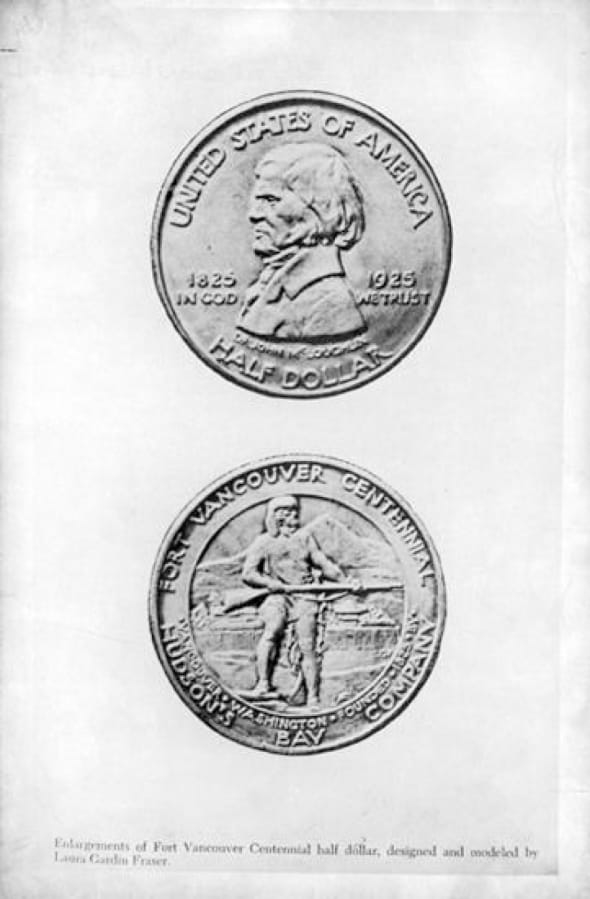
Clark County Historical Museum
Standing at Pearson Field in 1925, Herbert soon spotted the plane to the south. Pilot Oakley Kelly landed on the runway, and Herbert and the group approached him.
Kelly had just made a record-breaking flight from Pearson Field to San Francisco and back — 10 hours and 55 minutes. Kelly handed down a heavy sack of special coins that he’d just picked up from the San Francisco Mint.
The coins celebrated Fort Vancouver’s centennial and showed John McLoughlin on the front and a fur trapper on the back. The coin’s designer, Laura Gardin Fraser, was the first woman to design a U.S. coin.
Herbert, wearing a tan straw hat, was smiling as he grabbed the coin bag. The first consignment of the silver souvenir coin was given to Herbert, pictured on the next front page of The Columbian.
The paper was printed in a cramped post office building that was ready for an upgrade as Vancouver’s population and the paper’s circulation grew.
Old-old Columbian headquarters, 1921 to 1928
Near the clover of freeway onramps north of the Interstate 5 Bridge, I couldn’t see any trace of the old Columbian headquarters; new apartment developments are rising on the spot, the corner of Fourth and Washington streets.
Herbert’s features were sharp, and his hairline receded halfway up his head. His thin-framed spectacles and his suits gave him an intellectual look, but he seemed to be smiling so much, people would let their guard down quickly.
In 1921, he would have been sitting in his office in the “grubby” former post office, but he had big plans for the paper. He was the owner, publisher, editor and managing editor. A single copy at the time was 5 cents. He had to start changes small.
Herbert’s first changes to the paper included redoing the “flag” or the logo of The Columbian to feature a depiction of George Washington in the state seal along with new typeface for the newspaper. He added “Vancouver” into the flag for a time because “it can help in the slightest to advertise the city of Vancouver,” he wrote in a column. “We say our greatest duty is to advance the interests of Vancouver.”
Enlarge

The Columbian archives
Herbert reworked routes for delivery to help missing papers, and he gave young carriers complete control of their routes: “The new delivery system is more advantageous to those little carrier boys,” Herbert wrote.
He also changed the newspaper’s opinion editorial stance to neutral and began writing opinion columns. New features in the paper began popping up, including the “Office Cat” and “Kernel Cootie.”
The paper gained an additional reporter and began having more interesting and unique content, including more news from beyond Clark County.
On July 20, 1922, Herbert ended the weekly version of The Columbian and combined both papers. The main purpose was to make the advertising clients reach their full audience through one paper instead of using both.
“We’d completely outgrown that little shop,” said former editor Ray Bahman in a 1990 interview. “It was just unbelievable how we could cram in there.”
The newsroom, advertising and circulation departments were all in one room. A flatbed press printed about 3,000 papers a day, besides Sunday, a nonpublishing day.
In 1922, Herbert installed a new Kelly automatic press, a very efficient press that could make 4,000 copies an hour. “All that is required is that the type be put on the press, paper put in the proper receptacle and the juice turned on.” The public was invited to see the new machine in action.
In 1925, The Columbian held an elaborate subscription campaign, where renewals and new subscriptions counted as votes toward someone who eventually won a Buick sedan. Events like this got people excited to be part of the paper’s fun side.
In 1926, Herbert was attracting talent from Oregon and beyond with higher wages as he invested in the newspaper. Bachman received a call from Herbert, who wanted to hire the young man two weeks into his job at another paper.
“How much are you making?” Herbert asked. Bachman was making $35 a week, but he decided to fib. “I’m making $40,” Bachman said.
“I’ll give you $50,” Herbert replied.
Bachman joined The Columbian, but upon seeing the “grubby” building, he thought, “What have I gotten myself into?” (Bachman would spend the rest of his career at the paper and take over for Herbert as editor.)
By April 1926, Herbert expanded the newsroom with Bachman and others, because circulation and advertising had increased revenue. And the technology upgrades came, too. The circulation was 4,130 and a single copy was still 5 cents.
The Columbian installed teletypes that brought in news from the Associated Press.
“That was a huge improvement,” Bachman recalled from 1927. “We were so proud of them,” but they also “made an awful racket” as they clanked away with fresh news, including aviator Charles Lindbergh’s historic solo crossing of the Atlantic Ocean.
The Columbian “scooped” the Oregonian with the Lindbergh flight thanks to the new equipment; The Oregonian published it a day after.
Herbert at this time knew that The Columbian had outgrown its space. In 1928, he hired local legendary architect Day Hilborn to design a building specifically for a newspaper. There was a piece of property within walking distance that would work.
Enlarge
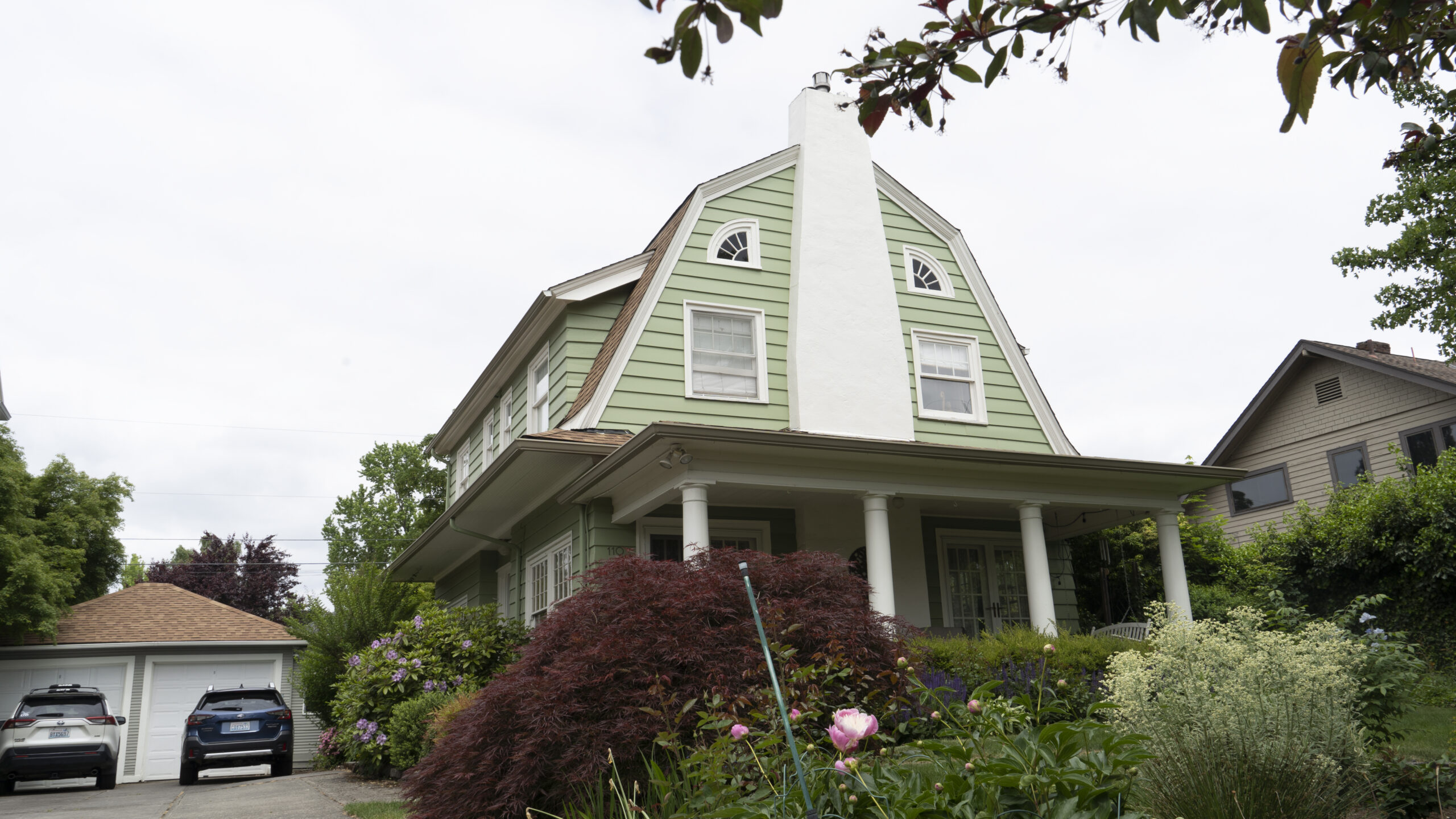
Will Campbell/The Columbian
The Campbell House, 110 W. 29th St., 1921 to 1941
One of the first things I noticed upon entering Herbert’s old house at 110 W. 29th St., realizing how grateful I was that the owner let me inside, was the original wooden floor leading to the staircase the Campbell family would have been shuffling up and down 100 years ago.
There were original fringed cabinets built into corners, crown molding on the ceiling and, miraculously, original spring-loaded pushbutton metal light switches that you’d press into the wall to activate, making a clanging noise. Herbert likely helped wear down those buttons that I touched now.
This is the house he bought in May 1922. The centerpiece on the home is a large chimney rising from the ground near the street side that is flanked by quarter-round windows. The roofline looks like a barn, and columns hold up a balcony overhang. The sale made the front page of The Columbian.
Here was Herbert and Ann Campbell’s home, where they raised their three kids: Helen, Don and Jack. They held Halloween parties and luncheons with carnations decorating the tables. Big names of Vancouver showed up — all of this documented in small articles that told of the chit-chat in that day.
Herbert installed a putting green near the home and bought a toy printing press for his son Don, who would print little cards and make a neighborhood newspaper. He was enticing the next generation into the business early.
A favorite drink of Herb’s that he made at that home was called a Tom & Jerry, which included beaten eggs, cinnamon, cloves, allspice, hot milk, sugar, rum and brandy. He published the drink recipe in The Columbian, too.
It wasn’t all good things that happened at the house. When the Great Depression hit, people would come to the door asking for something to eat.
Don, as a kid, recalled that Herbert “would invite them to join us at the dinner or breakfast table. My mother hated this, but my dad stuck to his principles. He thought everyone deserved respect, no matter what their lot in life.”
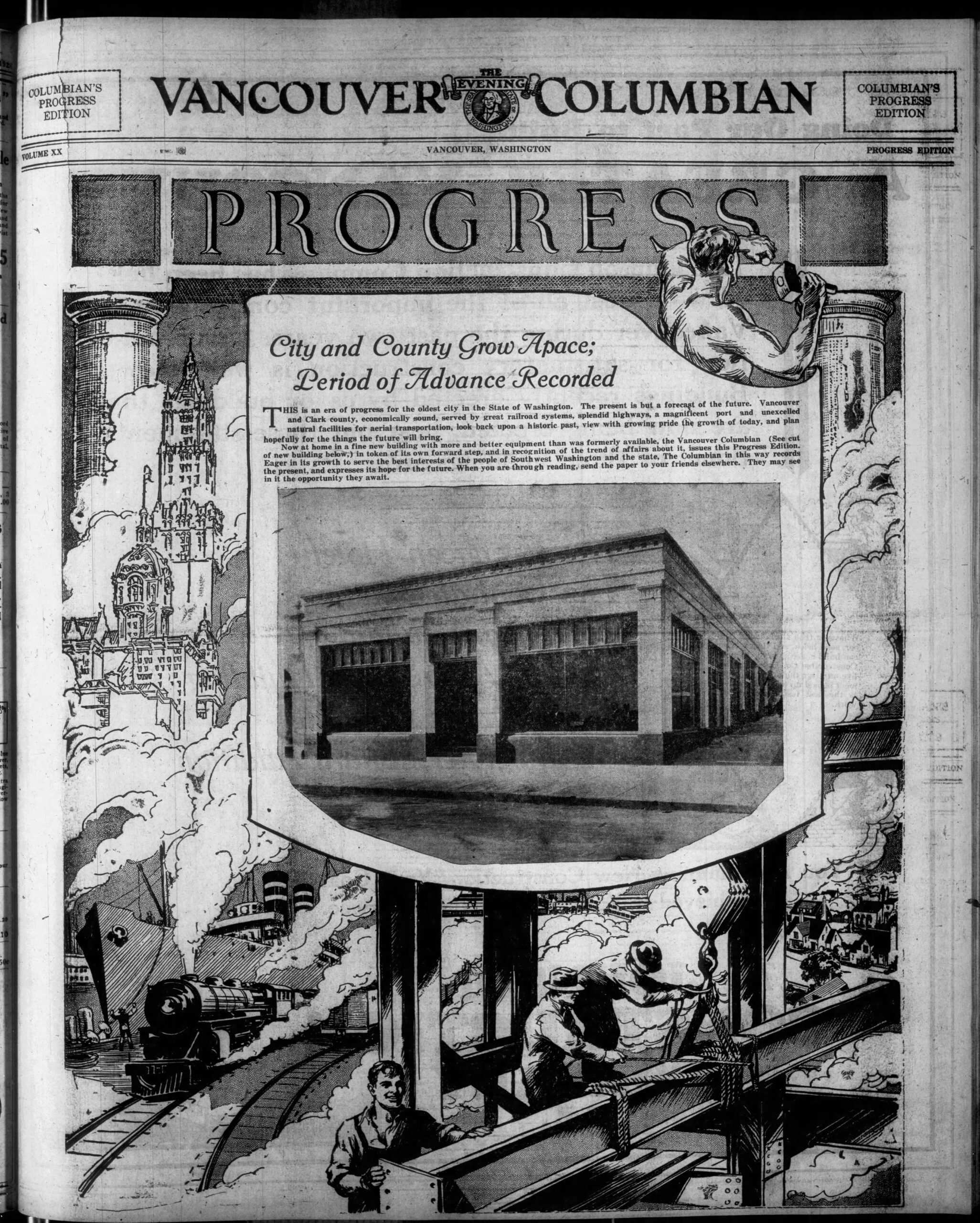
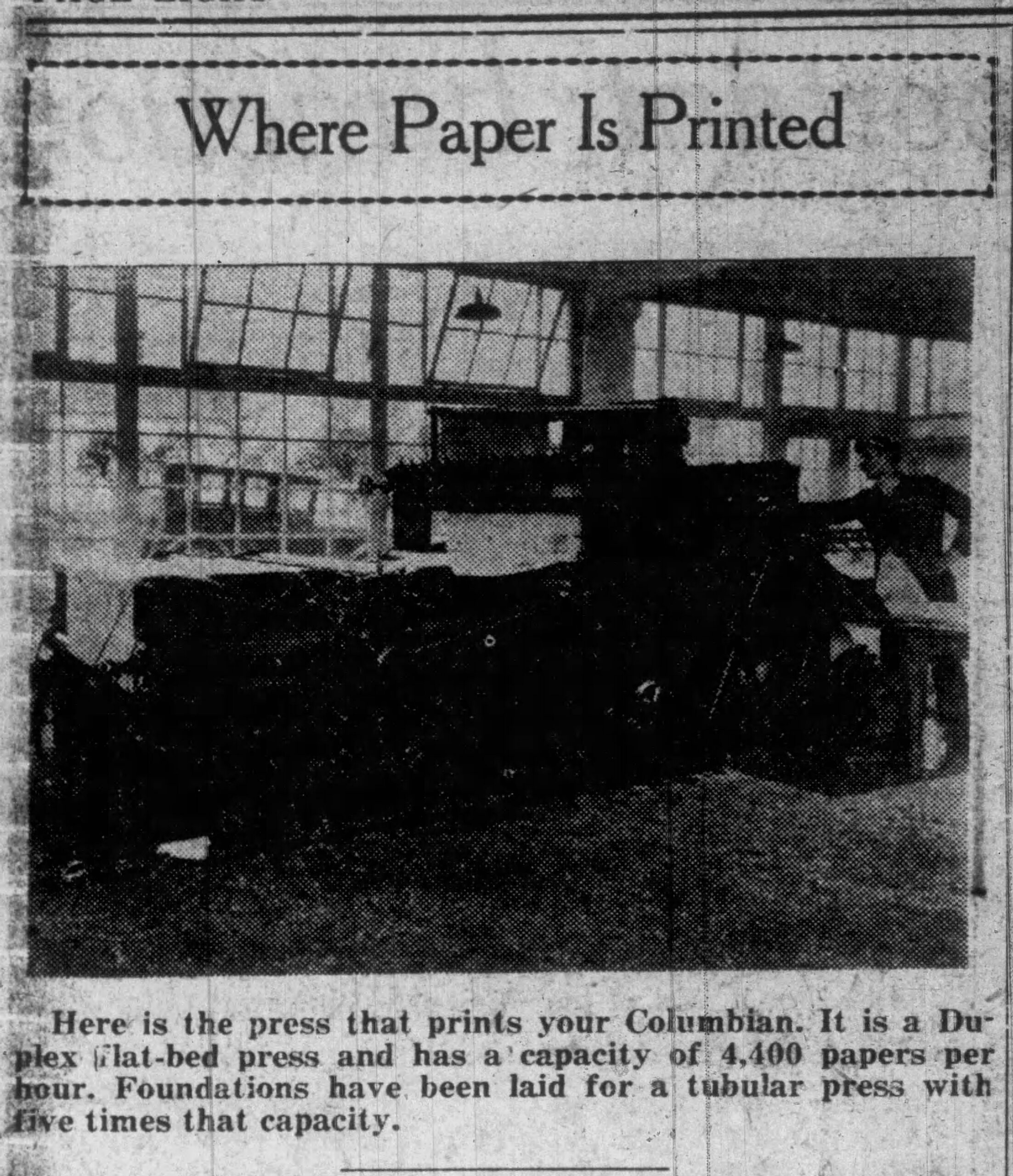

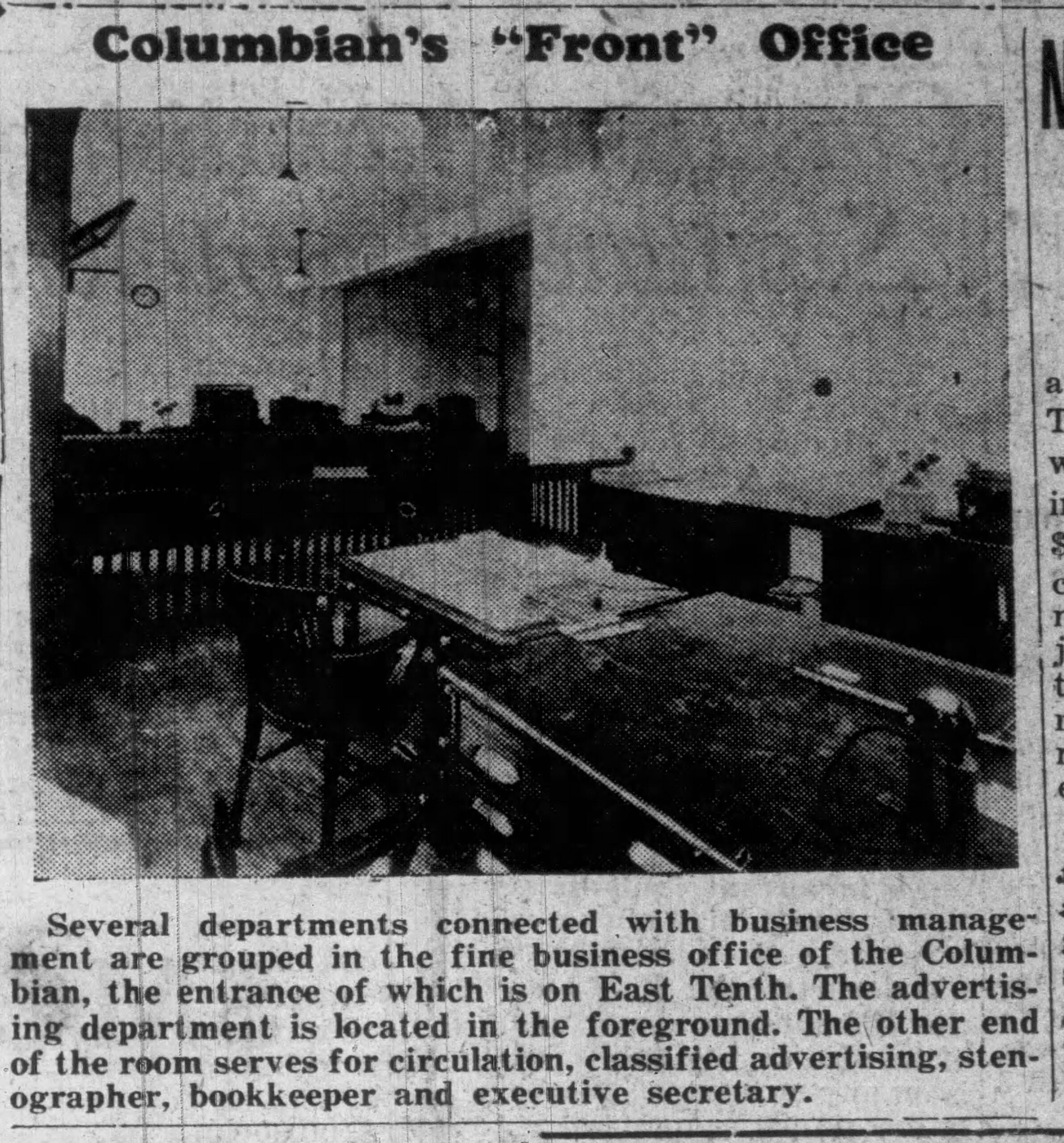
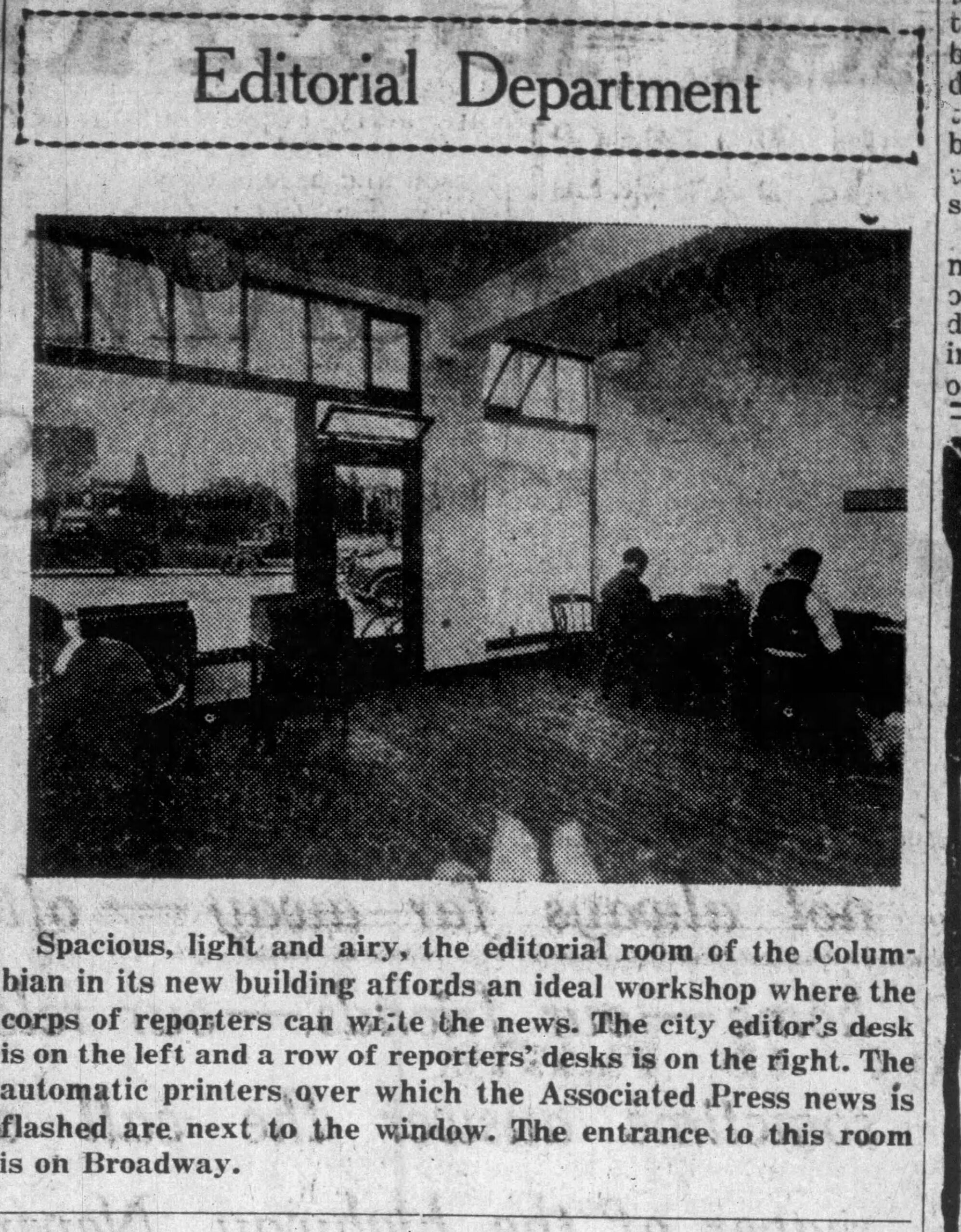
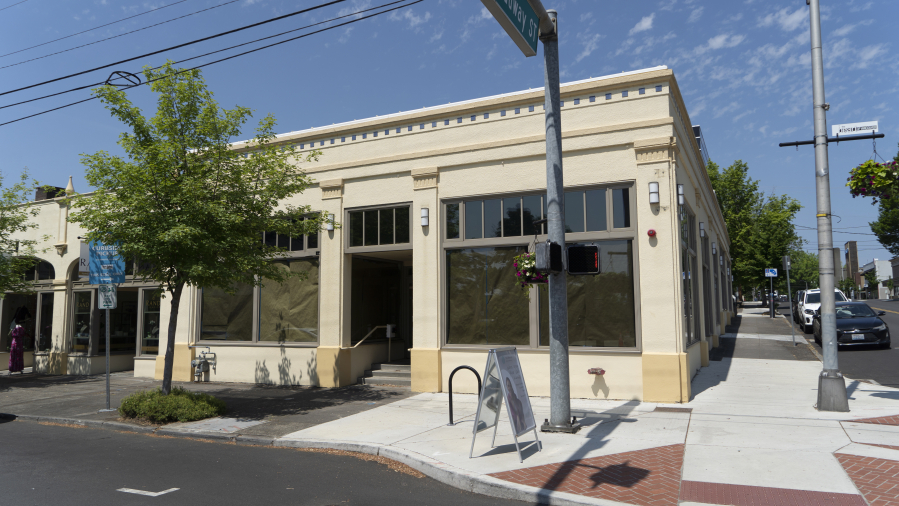
New Building, 1000 Broadway, 1928 To 1941
I imagined Herbert seeing this tan-colored one-story building that stood in front of me. It appears almost exactly as it did in 1928, on the corner of East Evergreen Boulevard and Broadway in downtown Vancouver.
I walked up to the building to meet the current owner, who unlocked the door and let me peek inside while it is under tenant renovations. I wanted to see the first building in Clark County specifically designed for a newspaper press, linotype machines and a newsroom.
There’s evidence of newspaper-specific features in the building. New wood covers the holes in the floor where workers could look down through the first floor and see the Linotype machines below. There were huge concrete foundations that held the press. And there’s the room surrounded by concrete; possibly the paper’s archives from as early as 1890.
Upon the opening of the $50,000 building, Herbert published a special 76-page edition on Tuesday, May 29, 1928 (a regular Tuesday had six pages) that highlighted all of Clark County — not just The Columbian. It detailed almost every industry and city in the county. In the edition, he encouraged readers to send it to their faraway friends to “see in it the opportunity they await.”
The Great Depression hit soon after Herbert built his new building, which some visitors ironically said looked like a bank. The Columbian was in debt and on the edge of bankruptcy in the 1930s.
“Only his ingenuity saved the paper,” Don wrote.
One thing he did was make a deal with a local car dealer: They could run as many ads as they wanted at no additional cost, but they had to give The Columbian a percentage of each car sold. Herbert also traded subscriptions for food. He paid his key employees in stock.
Herbert also agreed to operate under the terms of the Reconstruction Finance Corp., which meant federal government auditors would decide many financial matters of The Columbian, including employees’ salaries, including Herbert’s, according to Don.
In 1938, auditors determined that The Columbian should end its Saturday edition because it had little advertising.
In Bachman’s view, the thing that kept The Columbian going was a “cooperative,” in which all employees agreed that their wages and salaries were determined by the profit and losses of the company.
“It was a pretty tough time,” Bachman said, “but at least everyone had a job.”
In April 1936, circulation was 5,063, and “more Clark and Skamania news appears in the Vancouver Evening Columbian than in all of the other dailies delivered in this territory, combined,” according to an ad in The Columbian.
Despite money issues near the tail end of the Great Depression, 1937 brought a year of big upgrades to the paper: “ ‘STREAMLINED’ That, in a word, characterized today’s Columbian,” the paper read.
Enlarge
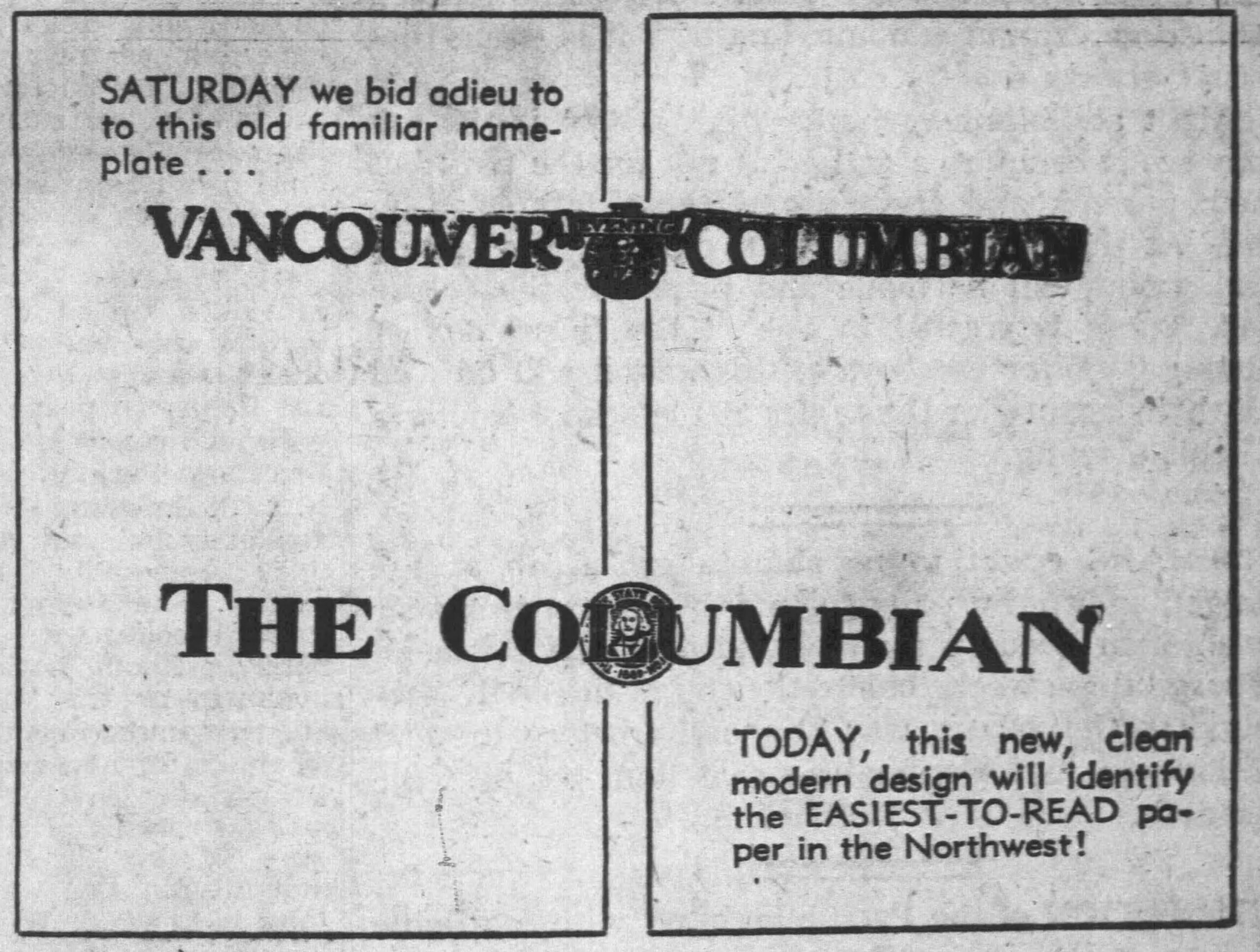
The Columbian archives
The Columbian installed new Model 30 Linotype machines in April 1937: “They are the largest, latest, finest and incidentally, the most expensive Linotypes ever built” at that time. The biggest upgrade was the sharpness of the letters on the page made for a much more crisp reading experience.
The newspaper also began its “Pictures by telegraph” — the Associated Press wire picture service that brought faraway photos to The Columbian through cables, according to a written history of The Columbian.
A slightly updated masthead appeared in the paper — also sharper.
In 1938, labor issues, like in many other businesses, came to the forefront of Herbert’s problems. Portland’s three newspapers stopped printing for a short time from the printers’ union. Problems never got that bad at The Columbian, but it was close.
Don recalled the story in his unpublished memoir: One printer named E.C. Newton was the head of the printers’ union at The Columbian. In 1938, Newton devised a plan. Herbert was an avid University of Oregon football fan, and Newton knew that Herbert held a party each year during the Washington game.
Newton convinced Herbert that they should schedule a bargaining session to work together and avoid a strike during the Christmas season, but he didn’t mention that it coincided with the Oregon vs. Washington football game.
“That Saturday, as the clock moved toward 1 p.m., my dad was in negotiations and getting very nervous. At 2 p.m., he gave in and agreed to the Portland wage scale!” Don wrote. (The Ducks won 3-0 at Multnomah Stadium in Portland that year.) There isn’t evidence of hard feelings. Newton and Campbell were playing golf together in a tournament the next year, and Newton eventually became a manager.
Throughout the Great Depression, Herbert was approached more than once by people wanting to buy the paper. In spite of its financial struggles, there was still promise as the town grew and the economy improved, Don Campbell wrote.
Herbert “turned down offers that would have made him relatively comfortable for the rest of his life,” Don wrote. “Instead, he chose to borrow on his life insurance and literally work himself to death to keep the newspaper for his family.”
Despite the economic downturn, circulation kept rising: in October 1937, there were 6,569 paying subscribers, and Herbert had reduced the cost of a single copy to 3 cents. In October 1940, circulation was up to 8,056.
But the financial strain was hard on Hebert’s health. He had multiple heart attacks.
“His doctors told him to quit smoking, cut back on drinking and avoid strenuous exercise,” Don wrote. “But my dad thought the quality of life was more important than how long you lived, so he disregarded the doctors’ advice.”
Herbert kept going on fishing and hiking trips and work events and even writing about them in the paper. He went to a publishers’ meeting in Salem, Ore., in May 1941. He had a heart attack and died on the drive home. He was 58.
Grave in Portland 1941
I had a hard time finding it among sloped grass, tall trees and winding roads.
Herbert Johnston Campbell’s grave sits just under a big rhododendron with purple flower clusters at River View Cemetery in Portland. Here in this spot, his wife, three kids and father were standing 83 years ago, watching him being put to rest and reflecting on his life.
It’s a rare thing to have a business that services four generations of owners and operators. Did he ever think that his great-grandchildren would be running the paper a hundred years after he bought it?
After I reflected for a while, I thought about the last sentence in the editorial that was published in The Columbian after Herbert’s death. I think it’s such a beautifully written tribute to a man who influenced so many that it’s worth publishing it in its entirety again.
“There is no happiness at The Columbian office today. The smiles and cheery greetings are missing. Eyes, frequently filled with tears, are downcast. The usual strident tone of the newspaper office has taken on an unnatural hush. Voices so accustomed to talk above the sound of machines and presses, are muted. Sadness, almost numbing because of the shock which preceded it, has settled like a silent and depressing cloak over all.
“Herb Campbell is dead.
“As editor and publisher of The Columbian for 20 years, Herbert J. Campbell had a major part in the molding of the destinies of Vancouver. The causes he espoused, the battles he fought for the progress of this community have left her unmistakable monument in the form of a thriving, progressive city. The mark which he made as an editor will stand forever as an honor to himself, his family and his profession.
“But we at The Columbian staff can hardly force ourselves to dwell on Herbert J. Campbell as an editor, as a molder of public opinion or as the head of this newspaper. Today we think only of Herb Campbell as a man and a friend. His editorial campaigns for a greater city were potent and effective but his hearty laughter, his bustling activity and generous and kindly nature were what ‘made the wheels go around’ for us, his employees.
“As a newspaperman he was fearless and honest. He wrote his convictions and language that was unequivocal and sometimes brutally frank. But there was never a more thoughtful and consoling man when the happiness and welfare of his friends and employees were concerned.
“His pen was trenchant, his mind was brilliant — and his heart was unbelievably big. Never have we known a man who took such sheer delight in pleasing others.
“Always ready and eager to praise the accomplishments of others, no matter how small, he was devoid of fuss and ostentation and would have been embarrassed to read these few lines about himself, even though they fail to do him justice.
“He would have been sorry to know of the sadness and gloom which his departure created, because he liked fun and laughter and enjoyment.
“His was a full life. He had the zest for living that gave him extra sparkle to every moment spent in his company. His death leaves a great void in the lives of those with whom he was associated.
“But somehow we feel that Herb can’t be so very far away after all. His life was so vibrant, his personality was so inviting and his heart was so great that he has left a lasting imprint on all of us.
“We at The Columbian bid him goodbye, in the comforting knowledge that his spirit will be with us forever.”
Afterword: I was planning on ending the story here, but something unexpected happened.
The day I visited Herbert’s grave, I finished writing this story. Afterward, I had to pick up my dog’s flea medication, so I drove to a spot outside The Grocery Cocktail, parked my car, and began jogging toward the vet’s office. As I crossed the corner of Turtle Place, I looked down, and I was stopped in my tracks. Herbert Campbell was painted on the ground tiles directly in front of me in this public square. It was the first time I’d ever seen it. I was shocked.
I think his spirit really will be with us forever.
